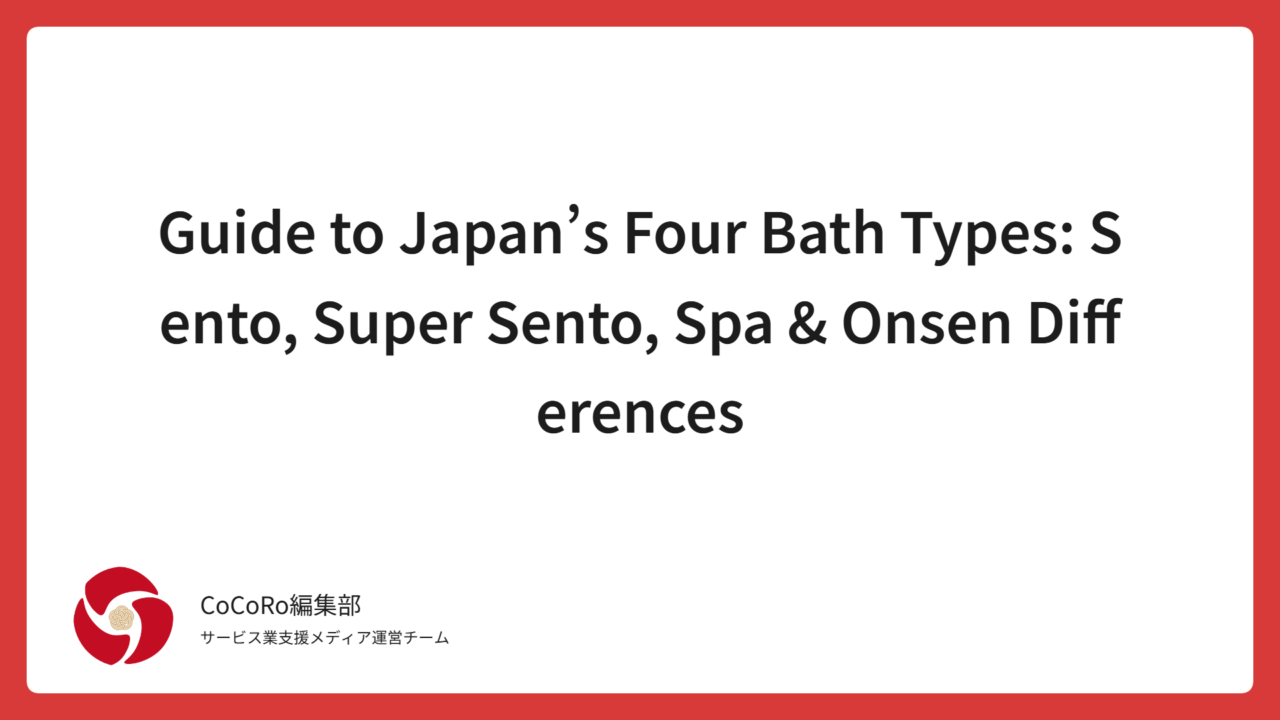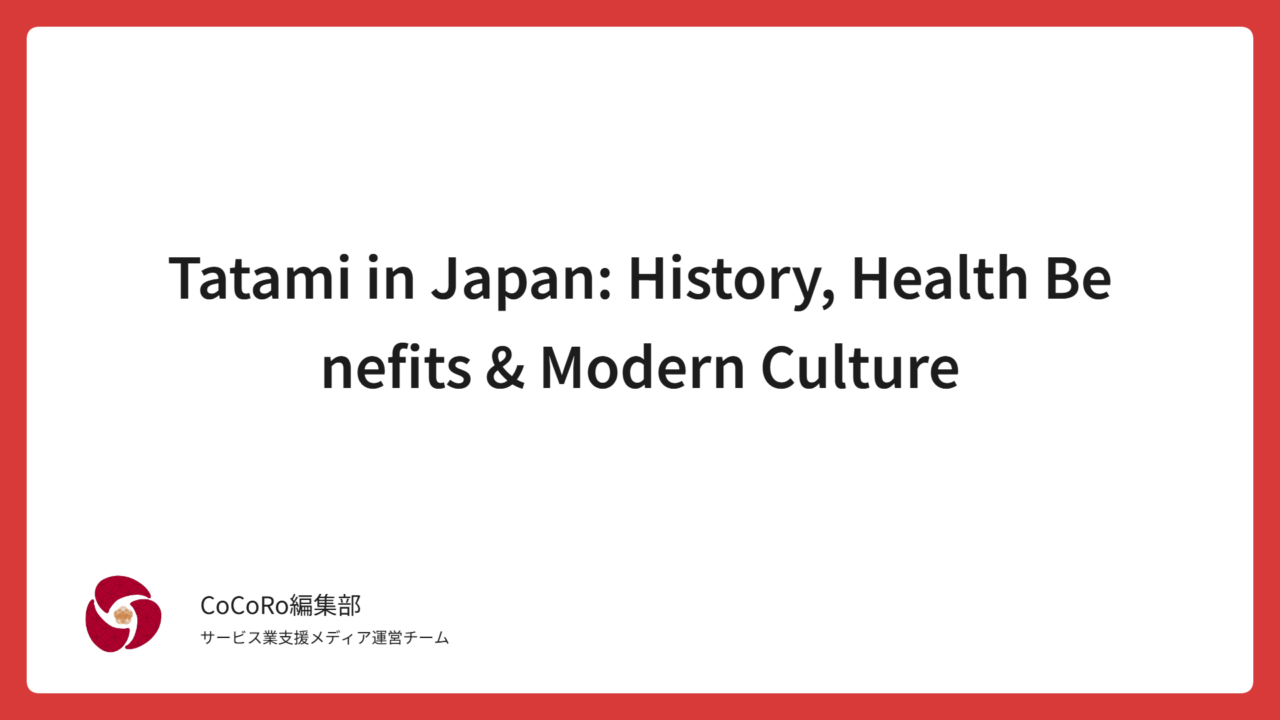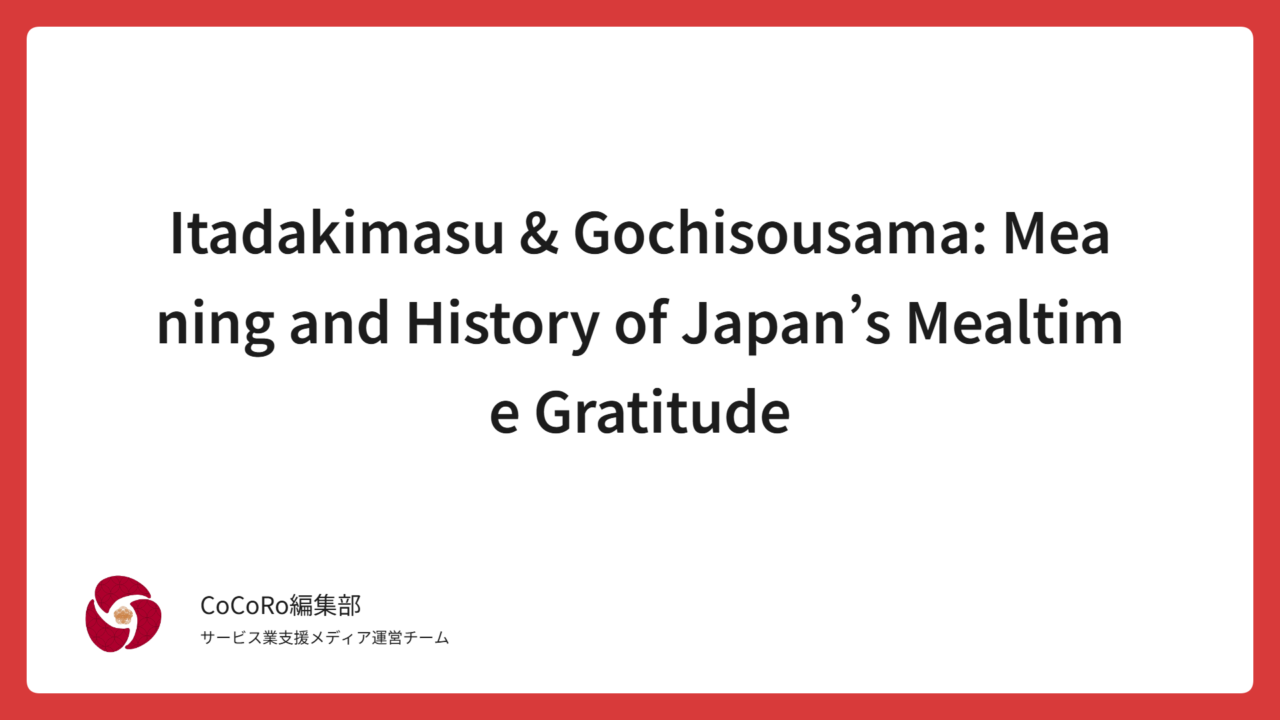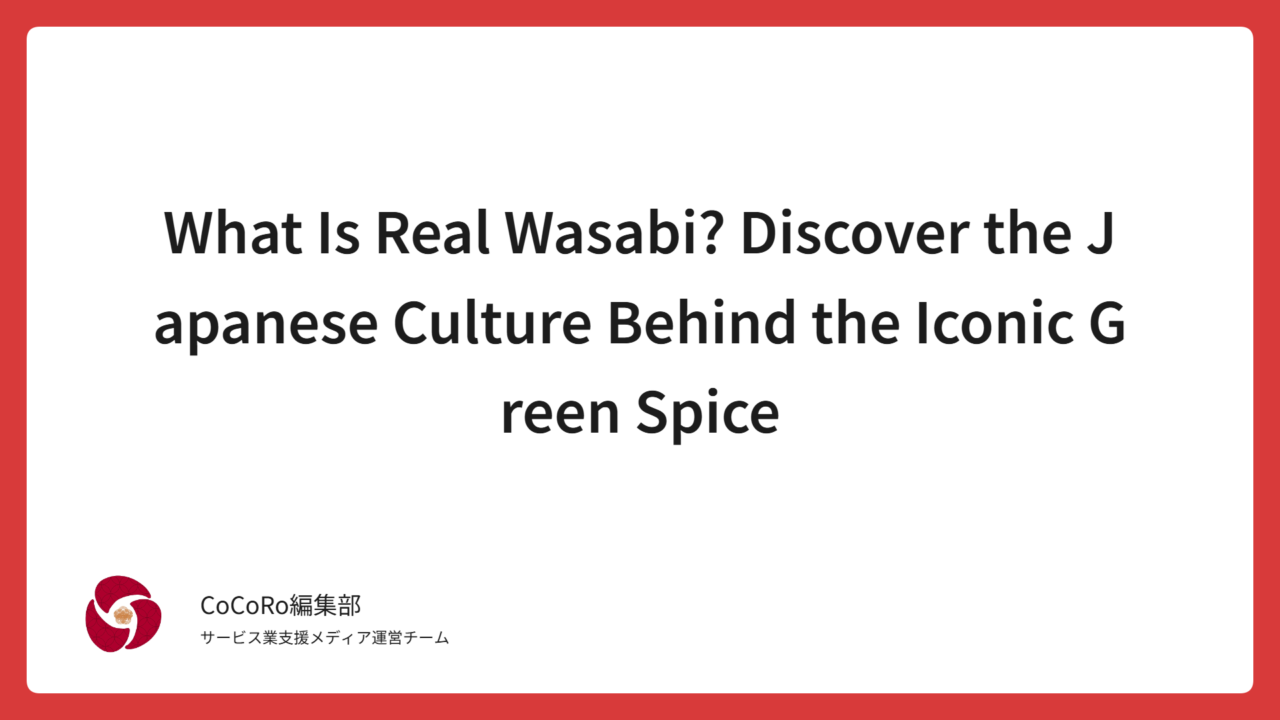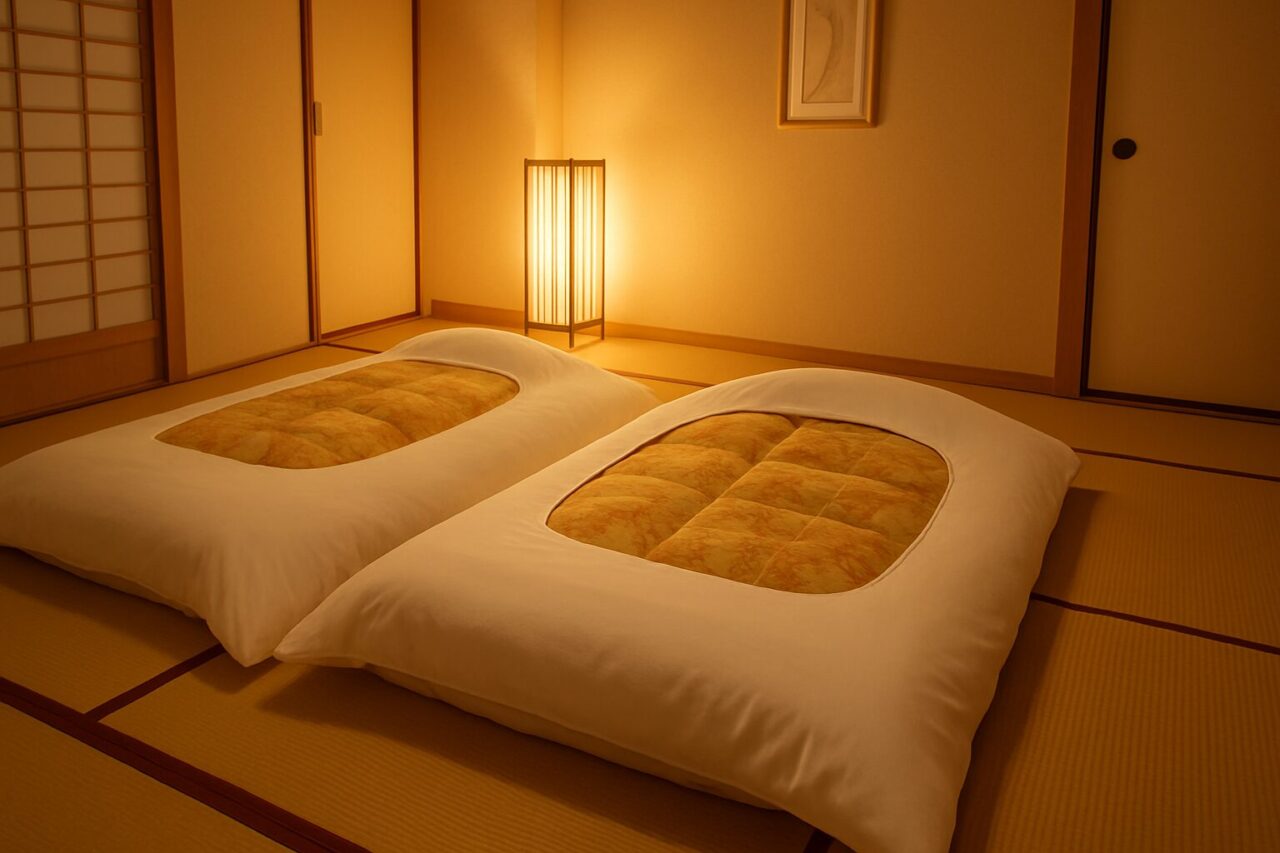Why Are Japanese People Drawn to Onsen? Exploring the Essence of Hot Springs Through Culture and Tradition
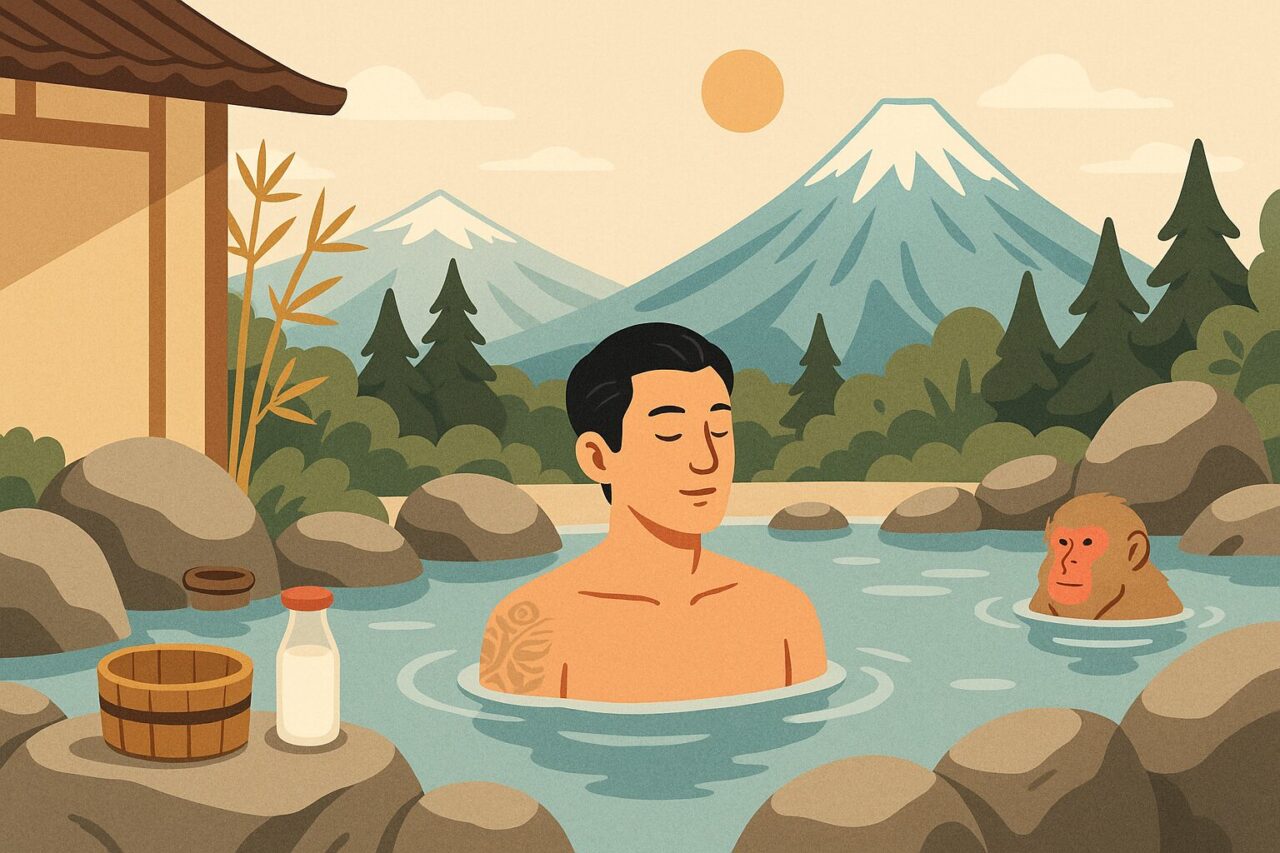
- Introduction: Why Onsen Hold a Special Place in the Hearts of Japanese People
- Chapter 1: How Japan’s Landscape and Seasons Created a Rich Onsen Culture
- Chapter 2: Onsen Through History — From Ancient Times to the Present
- Chapter 3: Healing and Cure — Understanding Japan’s Toji (Therapeutic Bathing) Culture
- Chapter 4: Zen and Onsen — A Japanese Path to Inner Peace and Mindfulness
- Chapter 5: Community and Etiquette — The Social Nature of Japan’s Naked Bathing Culture
- Chapter 6: The Origins of Japan’s Tattoo Bans and Evolving Attitudes
- The Healing Power of Japanese Hot Springs: Minerals, Benefits, and Nature’s Gift
- 1. Simple Thermal Spring (Tanjun Onsen)
- 2. Chloride Spring (Enkabutsu Onsen)
- 3. Sulfur Spring (Iou Onsen)
- 4. Bicarbonate Spring (Tansan Suisoenshitsu Onsen)
- 5. Carbon Dioxide Spring (Nisankatanso-sen)
- 6. Acidic Spring (Sansei-sen)
- 7. 含鉄泉(Iron Spring)
- 8. Radium Spring (Hōshanō-sen)
- 9. Iodine Spring (Ganyōso-sen)
- Chapter 8: Post-Bath Pleasures – Milk, Yukimi-zake, and Japanese Bath Culture
- Chapter 9: The Future of Onsen Culture — Coexistence, Diversity, and Globalization
- Conclusion: Toward a More Inclusive Sanctuary — The Future of Onsen
Introduction: Why Onsen Hold a Special Place in the Hearts of Japanese People
Japan is home to over 3,000 hot spring resorts, making it one of the world’s leading countries in the number of natural geothermal sources.
For Japanese people, onsen are not just bathing facilities—they are deeply rooted in the culture as places of healing for both body and mind, and as experiences that reflect the changing seasons and local traditions.
Whether it’s a quick soak at a day-use onsen, a luxurious stay at a traditional ryokan, or a quiet retreat at a therapeutic hot spring, Japan offers a wide variety of onsen experiences across the country.
Onsen also serve as a way to physically experience Japan’s deep connection with nature and the changing seasons.
From soaking in a snow-view bath in winter to enjoying cherry blossoms in spring or colorful foliage in autumn, these seasonal hot spring experiences reflect a uniquely Japanese sense of beauty and harmony with the natural world.
However, many aspects of the onsen experience that feel “normal” to Japanese people are rooted in cultural norms that may be unfamiliar to international visitors.
Bathing nude with strangers, rules and restrictions around tattoos, and post-bath customs and etiquette can all come as surprising—and sometimes confusing—elements for those new to Japanese hot springs.
In this article, we’ll explore what onsen truly mean to Japanese people and highlight the rich depth and charm of Japanese hot spring culture that we hope international readers will come to appreciate.
Onsen are more than tourist attractions—they are cultural experiences woven into everyday life. Join us on a journey to uncover the beauty and meaning behind this timeless tradition.
Chapter 1: How Japan’s Landscape and Seasons Created a Rich Onsen Culture
One of the most essential elements in understanding Japanese onsen culture is its deep connection with nature.
Japan sits on a major seismic zone and is home to frequent volcanic activity—geological factors that have created a diverse range of natural hot springs across the country.
In fact, there are over 3,000 onsen resorts stretching from Hokkaido in the north to Kyushu and Okinawa in the south, each with its own unique mineral composition and water flow characteristics.
Another fascinating aspect of Japanese onsen is the wide variety of spring types and their unique health benefits.
There are more than ten major types of hot spring minerals. For example, sulfur springs are known for promoting beautiful skin and have antibacterial properties; bicarbonate springs are said to help cleanse and moisturize the skin; and chloride springs are excellent for heat retention, keeping the body warm after bathing.
Other types include iron-rich springs that support blood circulation, and sulfate springs, which are believed to aid digestion.
This diversity allows visitors to choose an onsen experience that matches their health goals or personal preferences.
These mineral compositions are formed by a combination of underground rock layers, geological strata, and types of volcanic activity.
Japan’s complex geological makeup has played a major role in creating its rich and varied onsen culture.
In some hot spring regions, it’s not uncommon to find multiple types of spring water sources within a single area.
One of the most enchanting aspects of Japanese onsen culture is its deep connection to the four seasons.
In spring, you can soak while admiring cherry blossoms; in summer, be soothed by lush greenery and the sound of flowing rivers; in autumn, bathe surrounded by colorful foliage; and in winter, enjoy the serene beauty of snow-covered landscapes.
These seasonal onsen experiences are uniquely Japanese and rarely found elsewhere.
Onsen in Japan offer a way to engage all five senses and become one with nature.
In this way, the blessings of Japan’s geography and climate have long fostered a deep appreciation for onsen.
Over time, hot springs have evolved beyond their practical role as places to warm the body—they have become a cultural expression of living in harmony with the land and cherishing the beauty of each season.
Chapter 2: Onsen Through History — From Ancient Times to the Present
The history of onsen in Japan dates back to ancient times.
Some of the earliest written records, such as the Nihon Shoki (Chronicles of Japan, 8th century) and the Fudoki (early 8th century regional gazetteers), mention the existence of hot springs.
As early as the Asuka period (592–710), onsen were already regarded as sacred places.
At the time, they were believed to be “spiritual springs” (reisen) blessed by the divine, used in purification rituals to cleanse both body and mind.
During the Nara period (710–794) through the Heian period (794–1185), onsen became popular among the aristocracy.
Famous hot springs such as Yufuin and Beppu in Kyushu, and Arima Onsen in Hyogo, were especially valued as therapeutic retreats for the imperial family and Buddhist monks.
At that time, hot springs were not tourist attractions as they are today, but rather served as toji-ba—healing sites used to treat illness, with both religious and medicinal significance.
From the Sengoku period (1467–1603) through the Edo period (1603–1868), the use of onsen expanded beyond the elite to include samurai and common townspeople.
During the Edo period in particular, hot spring inns and therapeutic bathhouses (toji-ba) began to line the major travel routes, making it easier for travelers to enjoy both journeys and healing soaks.
The custom of yumeguri—visiting multiple hot springs—gained popularity, and it became common for people to stay at one onsen for a week or more, bathing multiple times a day at scheduled intervals.
This practice closely resembles today’s spa retreat style, emphasizing rest, routine, and wellness.
With the arrival of the Meiji period (1868–1912), the development of modern medicine led to scientific studies on the therapeutic effects of onsen.
Detailed mineral analyses of hot spring waters began to be documented across the country, marking a shift toward evidence-based health practices.
At the same time, the expansion of the railway system improved accessibility, and many hot spring areas gained popularity as travel destinations for leisure and tourism.
During the Showa period (1926–1989), group travel became increasingly popular, and onsen established themselves as go-to destinations for company outings and family vacations.
Hot springs were frequently featured in television programs and magazines, helping to solidify their role as major hubs for tourism and entertainment throughout Japan.
Today, onsen continue to symbolize relaxation and wellness, but they are also being re-evaluated through modern lenses such as “workcation” and “sustainable tourism.”
Interest among younger generations and international travelers is growing, prompting many hot spring resorts to adapt by offering multilingual services, enhanced privacy, and accommodations tailored to contemporary needs.
Looking back, it becomes clear that Japan’s onsen culture is more than just a long-standing tradition—it serves as a mirror reflecting the values and social contexts of each era.
Understanding what people sought in their hot spring experiences provides valuable insight into the evolving mindset and emotional landscape of the Japanese people.
Chapter 3: Healing and Cure — Understanding Japan’s Toji (Therapeutic Bathing) Culture
Japanese hot springs have long been cherished as places of both healing and therapeutic treatment.
During the Nara period (710–794) and the Heian period (794–1185), onsen were regarded as sacred spaces used for physical recovery and spiritual purification.
Far from the modern concept of relaxation, these hot springs were exclusive retreats for aristocrats and Buddhist monks, deeply rooted in religious and medicinal beliefs.
Building on this tradition, the Edo period (1603–1868) saw onsen culture extend to the general population, giving rise to a unique form of therapeutic bathing known as toji.
Toji refers to the traditional Japanese practice of staying at the same hot spring for a week or more, bathing several times a day to restore one’s health.
This custom resembles modern wellness retreats or spa-centered vacations, with an emphasis on routine, rest, and natural healing.
The appeal of toji lies in maximizing the health benefits of different types of hot spring water.
For example, sulfur springs were valued for easing skin conditions, carbonated springs for improving circulation, and chloride springs for alleviating sensitivity to cold.
During the Edo period, dedicated inns and therapeutic bathing facilities were developed specifically for toji guests, where meals were often medicinal and easy to digest—illustrating how hot springs were closely integrated with daily life and healing.
In the Meiji era (1868–1912), the rise of Western medicine led to the scientific study of hot spring properties.
Detailed chemical analyses of onsen water were conducted, and mineral compositions and therapeutic effects were systematically categorized.
This trend continues today, with many hot spring resorts across Japan promoting their unique water qualities and health benefits as part of their brand identity.
Even today, the tradition of toji has not disappeared.
Long-stay onsen inns and so-called “toji villages” continue to serve as destinations for rest, recovery, and rehabilitation.
In recent years, a growing number of international visitors have shown interest in toji culture—not only for its therapeutic effects, but also as a means of digital detox and holistic retreat from busy modern life.
Chapter 4: Zen and Onsen — A Japanese Path to Inner Peace and Mindfulness
An onsen is more than just a place for physical healing—it is a space for emotional and spiritual balance.
For many Japanese people, soaking in hot springs is a time to step away from the noise of everyday life and quietly reconnect with oneself.
This moment of introspection closely mirrors the principles of Zen, making onsen culture deeply intertwined with the Japanese pursuit of mindfulness and inner peace.
The Harmony Between Onsen and the Philosophy of Wu Wei (Effortless Naturalness)
In Zen philosophy, the concept of “Wu Wei”—often translated as “effortless action” or “natural spontaneity”—refers to a state of harmony where one yields to the natural order without interference.
This idea resonates deeply with Japanese onsen culture, where outdoor baths (rotenburo) are often left unadorned, nestled among rocks, trees, and the raw beauty of nature.
Rather than altering the landscape, these settings reflect Japan’s spiritual reverence for coexisting with the natural world.
Japan: The Country Where Even Monkeys Enjoy Hot Springs
One of the most iconic images of Japan’s harmony with nature is that of wild Japanese macaques soaking in hot springs.
At Jigokudani Monkey Park in Nagano Prefecture, these snow monkeys can be seen relaxing in the steamy baths to escape the harsh winter cold.
This peaceful scene, where animals and humans alike enjoy the blessings of nature, is a uniquely Japanese phenomenon—quietly reminding us that onsen culture is deeply rooted in a shared connection with the natural world.
This unique aspect of Japanese culture has captivated travelers around the world—leaving them both surprised and moved. Through social media and documentary films, it has solidified the global image of Japan as a land of hot springs, healing, and harmonious coexistence with nature.
The Intersection of Zen and the Japanese Bathhouse
In Zen temples, there once existed dedicated bathhouses known as yokudō—sacred spaces where monks would cleanse both body and mind as part of their spiritual training.
Immersing oneself in hot water amid silence, letting go of distractions, and turning inward is a timeless practice—one that still resonates in today’s onsen experience.
In this way, Japanese onsen culture is not only about warming the body—it also soothes the spirit, fosters harmony with nature, and invites reflection on the cycles of life.
As such, it continues to offer profound healing to those who seek more than just physical relaxation.
Chapter 5: Community and Etiquette — The Social Nature of Japan’s Naked Bathing Culture
One of the most distinctive—and sometimes surprising—aspects of Japanese onsen culture is the practice of bathing nude in shared spaces.
For many international visitors, this custom can be a source of hesitation or discomfort.
However, this “naked togetherness” reflects deeply rooted values in Japanese society, including equality, humility, and communal harmony.
In Japanese onsen, it is customary—and often required—to bathe without towels or swimsuits, entering the hot spring completely nude.
Far from being merely embarrassing, this practice serves as a symbolic gesture: shedding one’s social status, titles, and roles to stand on equal ground with others.
Whether samurai, merchant, or farmer, all entered the bath in the same way—naked, side by side, engaging in casual conversation.
This long-standing tradition highlights how onsen have historically functioned as a space for egalitarian connection across social boundaries.
At the same time, modern onsen etiquette is remarkably nuanced.
Bathers are expected to wash thoroughly before entering the tub, avoid loud conversations, and tie up long hair to keep it out of the water.
These are not just arbitrary rules—they reflect Japan’s strong cultural emphasis on mindfulness toward others and maintaining harmony in shared spaces.
For many foreign visitors unfamiliar with these cultural nuances, the challenge is twofold: not only the discomfort of bathing nude, but also the unspoken social rules that require “reading the room.”
However, in recent years, onsen facilities have made growing efforts to welcome international guests—providing multilingual signage, instructional videos on proper etiquette, and helpful guidance from staff at the hot spring resorts.
For those who still feel uncomfortable with communal nude bathing, there are more private options available—such as kashikiri-buro (private baths) or kazoku-buro (family baths).
These are usually reserved rooms for families or couples, where wearing a swimsuit or using a towel may be allowed depending on the facility.
For many international visitors, these private onsen offer a more approachable and comfortable way to experience Japan’s hot spring culture for the first time.
In Japanese onsen culture, communal bathing without clothing is more than just physical relaxation—it’s a way of dissolving social and emotional boundaries.
By stripping away the layers of status and formality, people connect more honestly with one another—and with themselves.
This deeper, introspective aspect of bathing is a key reason why hot springs continue to hold such profound meaning for many Japanese.
Chapter 6: The Origins of Japan’s Tattoo Bans and Evolving Attitudes
One of the unexpected challenges many international visitors face at Japanese hot springs is the sign that reads “No Tattoos Allowed.”
While tattoos are widely accepted as forms of self-expression or fashion in many countries, they have long been associated with restrictions or outright bans in Japan.
This cultural difference stems from unique historical and social contexts deeply rooted in Japanese society.
In Japan, tattoos (irezumi) were historically used during the Edo period (1603–1868) as a form of punishment for criminals.
Later, they became closely associated with the yakuza—Japan’s organized crime groups—further cementing their negative image.
Even today, many Japanese people still associate tattoos with delinquency or criminal behavior, and there remains a strong social reluctance to display them in public settings such as hot springs.
Especially in communal spaces like hot springs—where people bathe nude in close proximity to others—visual impressions play a major role in the sense of comfort and security.
Because some guests may feel uneasy when encountering visible tattoos, many facilities choose to restrict entry to maintain a peaceful and welcoming atmosphere for all visitors.
However, social values are gradually evolving with the times.
With the increasing number of international tourists and a growing global emphasis on diversity and inclusion, more onsen facilities in Japan are beginning to adopt more flexible policies regarding tattoos.
For example:
- Providing tattoo cover stickers (sometimes offered free of charge at onsen facilities)
- Allowing tattoos during designated time slots only
- Recommending the use of private onsen baths (such as family baths) with fully enclosed rooms
- Publishing lists of tattoo-friendly onsen accommodations
These kinds of specific accommodations are gradually being put into place.
For foreign visitors, it may be puzzling—”Why are tattoos frowned upon in Japan?” However, the aversion to tattoos in Japanese society is not merely based on prejudice; it stems from deep-rooted historical and social contexts. Therefore, it is important to approach the issue with cultural understanding and seek respectful alternatives.
In this regard, private baths—also known as kashikiri-buro—play an essential role. These exclusive spaces allow guests to relax without worrying about others, making them an ideal option for those who have tattoos or feel uncomfortable with communal nudity. Private baths offer a safe and welcoming way to enjoy Japan’s onsen culture.
As Japanese onsen culture becomes increasingly globalized, attitudes toward tattoos are gradually evolving. What matters most is fostering mutual respect for different cultural backgrounds while exploring new ways to coexist and enjoy this tradition together.
The Healing Power of Japanese Hot Springs: Minerals, Benefits, and Nature’s Gift
There are over 3,000 hot spring resorts scattered across Japan, each offering unique mineral compositions and health benefits. Japanese hot springs, or onsen, are not merely “hot water”—they are rich in naturally occurring minerals drawn from deep beneath the earth. These mineral differences have distinct effects on the body, making each onsen experience unique. In this sense, Japan’s hot spring culture is a deep and nuanced world—one that can even be described as the “science of bathing.”
Japanese hot springs are officially classified as “therapeutic baths” (ryōyōsen), and their mineral compositions fall into nine primary categories. Each type offers specific characteristics and health benefits, as outlined below:
1. Simple Thermal Spring (Tanjun Onsen)
This type of hot spring contains relatively low levels of dissolved minerals, making it gentle on the skin and suitable for people of all ages, including children and those with sensitive skin. While it may not have strong medicinal effects, it is ideal for overall relaxation and stress relief.
2. Chloride Spring (Enkabutsu Onsen)
Chloride springs are rich in salt (sodium chloride), which helps the skin retain heat after bathing. This makes them especially effective in preventing chills and relieving conditions like poor circulation or chronic coldness. The salt also has mild antibacterial properties, making it beneficial for those with skin sensitivities.
3. Sulfur Spring (Iou Onsen)
Sulfur springs are characterized by their distinctive “rotten egg” smell caused by hydrogen sulfide. These springs are known for their antibacterial and anti-inflammatory effects, making them effective for treating skin conditions such as eczema and psoriasis. Additionally, they are believed to support metabolism and improve joint pain and arteriosclerosis. However, due to their strong properties, they may not be suitable for people with sensitive skin or respiratory issues.
4. Bicarbonate Spring (Tansan Suisoenshitsu Onsen)
Known as the “Beauty Bath,” this type of hot spring helps remove dead skin cells and leaves the skin smooth and soft. It is also effective in improving acne and rough skin.
5. Carbon Dioxide Spring (Nisankatanso-sen)
This type of spring contains dissolved carbon dioxide gas, which stimulates blood circulation and can help lower blood pressure. It is often recommended for people with high blood pressure or circulatory issues.
6. Acidic Spring (Sansei-sen)
This spring type features high acidity, often with a pH below 3. It has strong antibacterial properties and is effective in treating skin conditions like athlete’s foot and eczema. However, due to its potent nature, it may cause irritation for people with sensitive skin.
7. 含鉄泉(Iron Spring)
Rich in iron content, this spring type is known for its reddish-brown coloration caused by oxidation. It is believed to help with anemia and fatigue recovery. Due to its tendency to stain towels and tubs, it requires careful handling.
8. Radium Spring (Hōshanō-sen)
These springs contain trace amounts of naturally occurring radon gas. It is believed to promote metabolism, relieve joint pain, and improve overall vitality. While the radiation level is extremely low and considered safe, it remains a unique and notable feature of some Japanese hot springs.
9. Iodine Spring (Ganyōso-sen)
These springs contain iodine, which is known for its antiseptic and antibacterial properties. Bathing in iodine-rich waters is believed to help treat wounds, support thyroid function, and improve skin conditions. Though relatively rare, they are valued for their therapeutic benefits.
These variations in spring quality are attributed to geological factors such as the region’s rock formations, volcanic activity, and depth of underground water sources. Japan’s diverse topography has gifted the country with this rich array of hot spring types. In fact, many Japanese people carefully consider the spring quality (sen-shitsu) when choosing a hot spring destination, often matching the therapeutic effects with their own physical condition.
Many international visitors also show a strong interest in understanding the medicinal properties of hot springs. It’s not uncommon for them to choose their destination based on specific health concerns—asking questions like “Which hot spring is good for back pain?” or “Which spring quality is best for beautiful skin?”
By gaining a deeper understanding of these therapeutic properties before visiting, travelers can greatly enhance the value of their bathing experience. Hot springs are not just leisure spots—they are a form of natural therapy provided by the earth itself.
Chapter 8: Post-Bath Pleasures – Milk, Yukimi-zake, and Japanese Bath Culture
After enjoying a relaxing soak in a hot spring, many Japanese people look forward to the simple pleasures that follow—an essential part of what makes Japanese onsen culture so rich and unique. These post-bath rituals, from beverages to seasonal customs, have long been cherished as part of Japan’s distinctive “after-bath culture.”
The Classic After-Bath Treat: Milk in a Glass Bottle
A quintessential example is milk served in glass bottles. The tradition of chugging it down in one go—often with one hand on the hip—traces its roots back to the public bathhouse (sento) culture of the Showa era (1926–1989). Today, it remains a beloved ritual in hot spring resorts, with milk available in rest areas and hotel lobbies across the country. This nostalgic image has become part of the quintessential Japanese onsen experience.
Furthermore,
- Rich and creamy whole milk
- Mildly bitter and sweet coffee milk
- Fruity strawberry milk
These diverse flavors remain popular among bath-goers, and in recent years, many hot spring resorts have begun offering unique local specialty milk, allowing visitors to enjoy regionally inspired tastes after their soak.
Snow-viewing Sake and Moon-viewing Sake — Seasonal Drinks Infused with Japanese Aesthetic
日本では古くから、自然と一体になる“湯の楽しみ”が尊ばれてきました。その中でも特に風情あるものが、「雪見酒」や「月見酒」という文化です。
Yukimi-zake—enjoying a cup of sake while soaking in a hot spring as snow falls around you—is a luxurious and serene wintertime tradition in Japan.
- Tsukimi-zake—the poetic experience of quietly savoring sake while soaking in steam-filled waters beneath a clear autumn night sky with the moon shining above.
These traditions are often portrayed as enjoying sake while bathing, and in some ryokan (traditional Japanese inns) with open-air baths attached to guest rooms, such an experience is indeed possible. Culturally, it has long been cherished as a refined moment of extraordinary luxury.
However, Drinking Alcohol While Bathing Requires Caution Today
On the other hand, most modern onsen facilities do not recommend drinking alcohol while bathing. This is because…
- Soaking in hot water causes blood vessels to dilate, which accelerates the absorption of alcohol.
- It may lead to dizziness, falls, or even loss of consciousness.
- It also increases the risk of dehydration.
For these reasons, drinking alcohol while bathing is considered an act to be avoided for safety reasons.
As a result, in modern ryokans (traditional Japanese inns),
- Enjoying tsukimi-zake (moon-viewing sake) on a private open-air bath’s terrace or wooden deck after bathing.
- Savoring sake while gazing at the snow through the window after stepping out of the private bath.
Such styles of enjoyment have become the mainstream way to offer these experiences today.
In this way, while prioritizing safety, savoring a drink alongside the snow or moonlight adds a rich and memorable touch to the post-bath experience.
In Japan, the hot spring experience is not limited to soaking in the water—it is a cultural journey that extends beyond the bath itself. Drinking milk, enjoying a glass of sake, and surrendering to a moment of stillness—these post-bath rituals are what enrich the experience and turn it into a truly unforgettable memory.
Chapter 9: The Future of Onsen Culture — Coexistence, Diversity, and Globalization
Japan’s onsen culture, with its long history and profound spiritual significance, is now undergoing a major transformation.
Shifts in regional economies due to a declining birthrate and aging population, the rapid growth of inbound tourism, and the global emphasis on diversity are all bringing new challenges—and new opportunities—to the future of this cherished tradition.
A Shift Toward Diversity and Coexistence
Once considered a “Japanese tradition for Japanese people,” onsen have now become destinations for travelers from around the world. As a result, there is a growing need to accommodate differences in cultural values and physical customs.
Efforts have begun—albeit gradually—at some facilities to create inclusive environments where people with diverse backgrounds can enjoy onsen comfortably. This includes individuals who may feel uneasy about bathing nude, those with tattoos, and travelers with religious restrictions.
For example:
- The introduction of private and family baths has increased the options for enjoying hot springs while maintaining personal privacy.
- Some facilities have begun adopting universal design principles, such as eliminating steps, installing handrails, and providing accessible restrooms.
- Some hot springs have gradually begun explicitly addressing accommodations for guests with tattoos, such as offering cover stickers or designating specific bathing hours.
These initiatives are not yet widespread, but as the number of international tourists continues to grow and awareness of diversity deepens, further developments in accessibility and inclusivity are anticipated in the near future.
The Role of Hot Springs in Regional Revitalization
Many hot spring resorts are located in rural areas that face challenges such as population decline and economic stagnation. In this context, onsen are being re-evaluated as “engines of regional revitalization.”
- Tourism programs that integrate local culinary traditions and cultural experiences
- Hot spring inns offering workcation plans and accommodations with co-working spaces.
- Flexible accommodation plans tailored for long-term international visitors and digital nomads.
Such approaches toward emerging demand segments are gaining momentum, and hot springs in Japan are evolving beyond just places of relaxation—they are becoming spaces deeply connected to new ways of working and living.
Hot Springs as a Tool for International Exchange and Cultural Promotion
Amid the global rise in wellness awareness, Japanese hot springs are gaining attention as a unique form of retreat for both body and mind.
With concepts such as Zen philosophy and harmony with nature at their core, onsen are becoming symbolic ambassadors of Japanese culture to the world.
In this global movement, what becomes truly important is conveying onsen not merely as a leisure activity, but as a reflection of the Japanese values of gratitude, respect, and moderation that have long surrounded it.
Only through such thoughtful communication can the cultural essence of onsen be truly understood and passed down to future generations.
Conclusion: Toward a More Inclusive Sanctuary — The Future of Onsen
Onsen is more than just the act of soaking in hot water — it is a cultural tapestry woven with the threads of Japanese spirituality, reverence for nature, and a deep sense of community.
Today, this tradition is encountering the global community, beginning a new chapter of fusion with diverse values and perspectives.
A space where diverse individuals can share healing while embracing one another’s differences—
we are now witnessing Japanese onsen culture evolve into a more open and inclusive tradition for the future.

